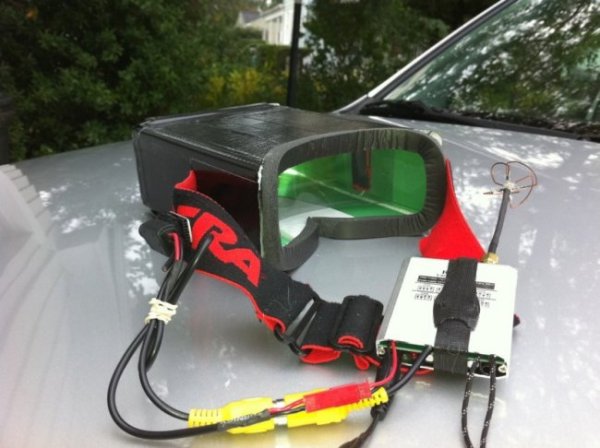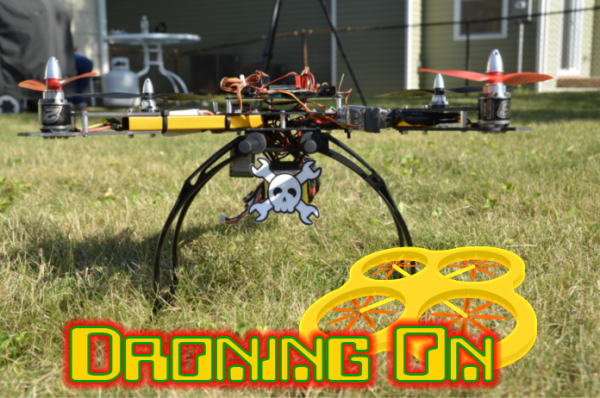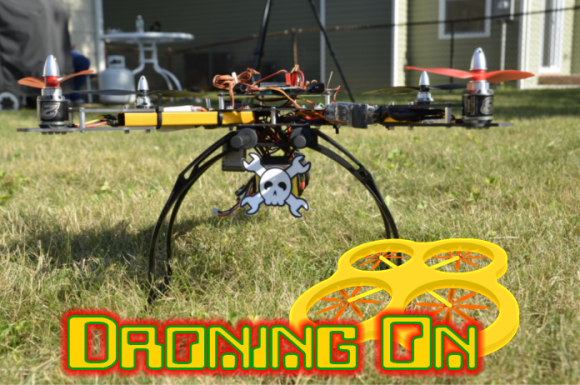So now that you’ve built your quadcopter and can fly it without crashing most of the time, what’s next? How about metaphorically hopping into the pilot’s seat with a First Person View setup. Great idea… but the cost of the required gear can be a deal breaker. FPV goggles alone range from the low to high hundreds. [sneaky] was using his laptop screen for his FPV setup and decided to try to make is own FPV goggles.
The display is just a small LCD screen that was purchased off eBay. Craft foam board was cut, bent, glued and duct taped to form a box about the same size as the LCD screen which is also secured to the box with duct tape. [sneaky] then cut the opposite side of the box to fit his face before he lined it with 1/2″ weatherstripping foam. Staring at an LCD screen just inches from your face is sure to cause some discomfort. A Fresnel lens inserted in between the user’s eyes and the LCD reduces eye strain to make long flights tolerable. The whole assembly is then held to your noggin via a recycled ski goggle strap.
In the end, [sneaky] likes his new goggles better than his old laptop screen and sun shade setup. The goggles aren’t too heavy and he can wear them comfortably for a while. We’ve seen a DIY FPV goggle setup in the past that uses individual lenses for each eye rather than one large Fresnel lens.





 The project featured in this post is
The project featured in this post is 












